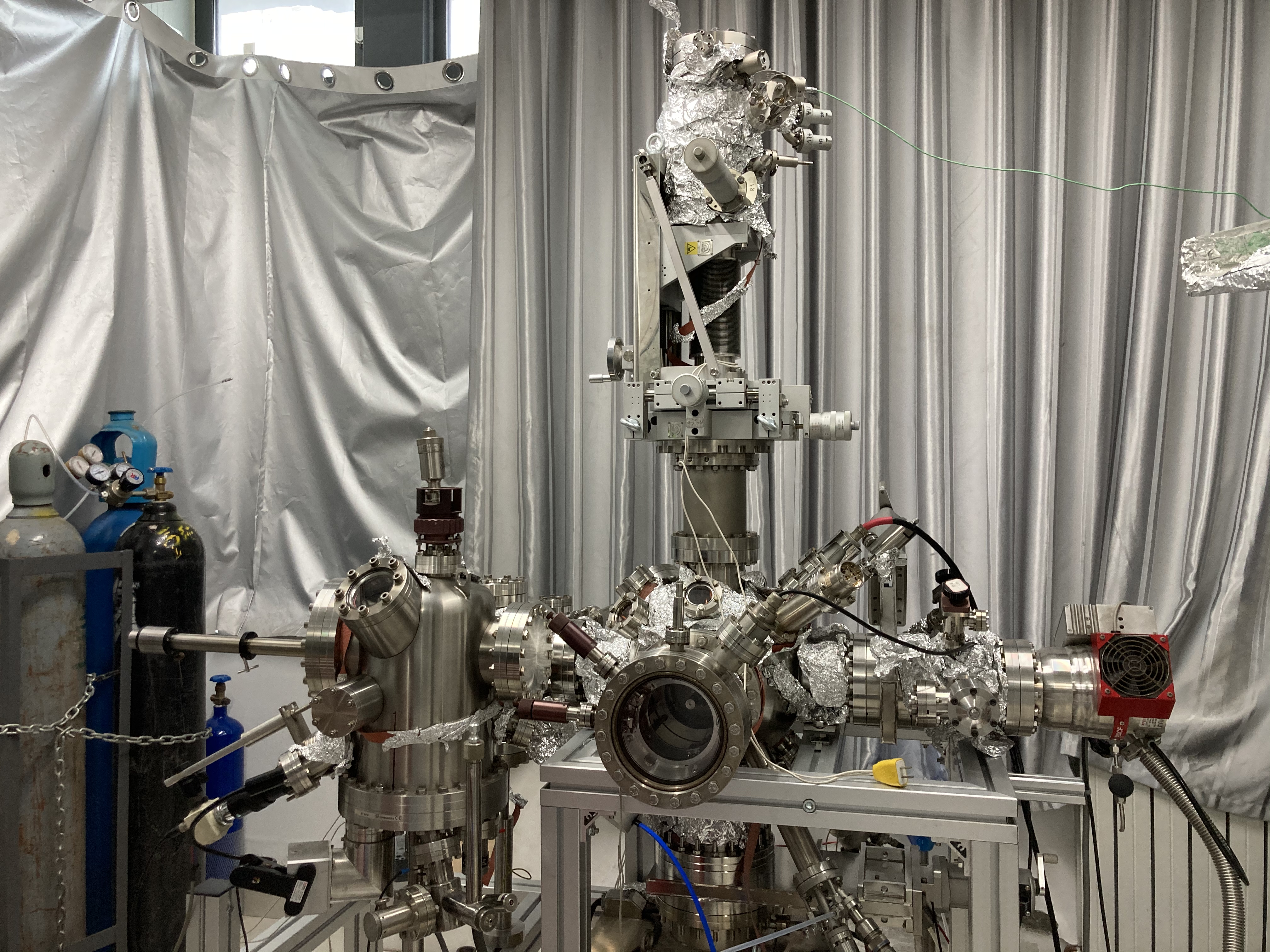The Group of SPM & Surface Reaction


Createc LT-SPM is specially designed for working at atomic scale at low temperature (i.e. to perform atomic /
molecular manipulation or local spectroscopy). The compact design ensures its high stability (dz<1pm).
The SPM is thermally isolated. Its temperature can be varied between 5 K and 300 K. The low temperature of the SPM
freezes the motion of most adsorbates which can be evaporated onto the sample surface either inside or outside the
SPM. The surface/adsorbates can be investigated for weeks. No degradation of the sample will be observed as long
as the 4 K radiation shield, that surrounds the SPM, remains cold.
Due to the design of the cryostat, very low helium consumption is achieved, which requires to refill only 4 L of
liquid helium every 72 hours when the SPM is at its lowest temperature.
Chemical vapor deposition system contains tube furnace and flowmeter. The CVD system can be used to grow lots of thin films, such as graphene, topological insulator, C3N4. A great performance of the flowmeter and a good pressure of the whole system make the thin films have a better quility. Some of these materials can be studied by LT-STM even in UHV.
The VT-SPM system is specifically combined to research surface physical chemistry. It can provide a remarkable temperature range from 25 K to 1500 K (direct heating) / 750 K (resistive heating). In ultra-high vacuum system (1*10E-10 mbar), MBE (Molecular Beam Epitaxy) is used to prepare metal or oxide films on metals and oxides. LEED (Low-Energy Electron Diffraction) and AES (Auger Electron Spectroscopy) are used to characterize the structure and chemistry infomation of films. TPD (Temperature Programmed Desorption) could be effectively study interaction between designed surface sites and adsorbates.

The MultiMode Scanning Probe Microscope (MM-SPM) is designed for imaging small (approx. 1.5 cm dia.) samples using a series of interchangeable scanners and is able to provide images from the atomic scale to 175 µm in size. The MM-SPM is designed around a stationary probe. That is, samples are scanned back and forth beneath the probe. Typically, samples are fixed to round 1.5 cm metal disks (“pucks”), then magnetically attached to the top of the scanner tube. As the scanner moves back and forth, the sample moves with it, allowing the probe to extract information from the sample surface much like a phonograph needle plays a vinyl record.
